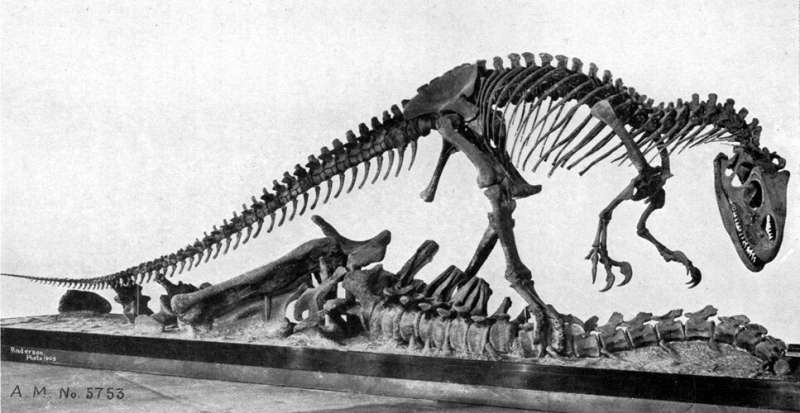
Carnivorous dinosaurs might have evolved to take advantage of giant carcasses, according to a study published November 1, 2023 in the open-access journal PLOS ONE by Cameron Pahl and Luis Ruedas of Portland State University, Oregon and colleagues.
Carnivorous dinosaurs lived in ecosystems rich with both living and dead prey. The authors hypothesize that giant carcasses, like those of sauropod dinosaurs, might have provided a major source of food for large carnivores.
To test this hypothesis, the researchers created an agent-based model, a simplified virtual simulation of a dinosaur ecosystem. This model was based on the ancient fauna of the Jurassic-aged Morrison Formation, which included large predators like Allosaurus alongside large sauropods, their carcasses, and an infinite supply of huntable stegosaurs.
In the model, carnivores (intended to simulate allosaurs) were assigned traits that would improve their hunting or scavenging abilities while obtaining energy from meat sources (simulating living prey or sauropod carcasses).
The model measured the evolutionary fitness of these simulated carnivores and found that, when large sources of sauropod carrion were available, scavenging was more profitable than hunting, suggesting that carnivores in such ecosystems might have evolved specialized traits to help them detect and exploit large carcasses.
The authors stress that this model represents a simplified abstract of a complex system, and that the results might be altered with the inclusion of more variables, such as additional dinosaur species or features of the life history of the simulated dinosaurs. They note that models like this might improve our understanding of how the availability of carrion can influence the evolution of predators.
The authors add, “Our evolutionary model demonstrates that large theropods such as Allosaurus could have evolved to subsist on sauropod carrion as their primary resource. Even when huntable prey was available to them, selection pressure favored the scavengers, while the predators suffered from lower fitness.”
“So we think allosaurs probably waited until a bunch of sauropods died in the dry season, feasted on their carcasses, stored the fat in their tails, then waited until the next season to repeat the process. This makes sense logically too, because a single sauropod carcass had enough calories to sustain 25 or so allosaurs for weeks or even months, and sauropods were often the most abundant dinosaurs in the environment.”
More information:
Big boned: How fat storage and other adaptations influenced large theropod foraging ecology, PLoS ONE (2023). DOI: 10.1371/journal.pone.0290459 , journals.plos.org/plosone/arti … journal.pone.0290459
Provided by
Public Library of Science
Citation:
Giant dinosaur carcasses might have been important food sources for Jurassic predators (2023, November 1)
retrieved 1 November 2023
from https://phys.org/news/2023-11-giant-dinosaur-carcasses-important-food.html
This document is subject to copyright. Apart from any fair dealing for the purpose of private study or research, no
part may be reproduced without the written permission. The content is provided for information purposes only.
